Deductive Versus Inductive
 One of the most basic distinctions made in critical thinking courses is the distinction between deduction and induction. A deductive argument differs from an inductive argument in that deductive arguments prove conclusions with rigorous, inescapable logic.
Inductive arguments show that conclusions are plausible or likely given the premises.Although based in probability, inductive arguments can be extremely powerful. Polls are a very common form of inductive argument. So, too, are weather forecasts and statistical arguments.
One of the most basic distinctions made in critical thinking courses is the distinction between deduction and induction. A deductive argument differs from an inductive argument in that deductive arguments prove conclusions with rigorous, inescapable logic.
Inductive arguments show that conclusions are plausible or likely given the premises.Although based in probability, inductive arguments can be extremely powerful. Polls are a very common form of inductive argument. So, too, are weather forecasts and statistical arguments.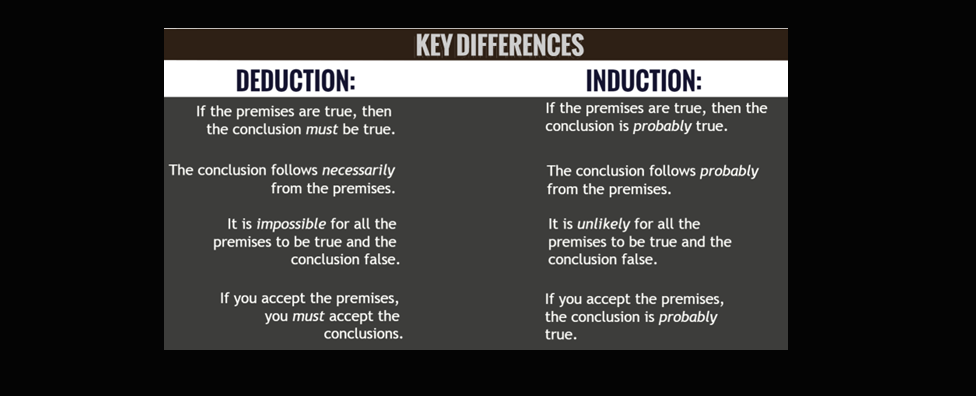
Argument type indicators exist that can help you identify the type of argument you may be encountering:

Common Deductive Patterns
What follows are four common patterns or "blueprints" for constructing deductive arguments. If you follow the "blueprints" and accept the premises, you must accept the conclusions.
Modus Ponens

Modus Tollens

Elimination (Disjunction)

Chain Argument

Common Inductive Patterns
Induction measures arguments in degrees of probability. Perhaps the most well-known of inductive-based approaches is the scientific method. But there are other well-known inductive ways of knowing:
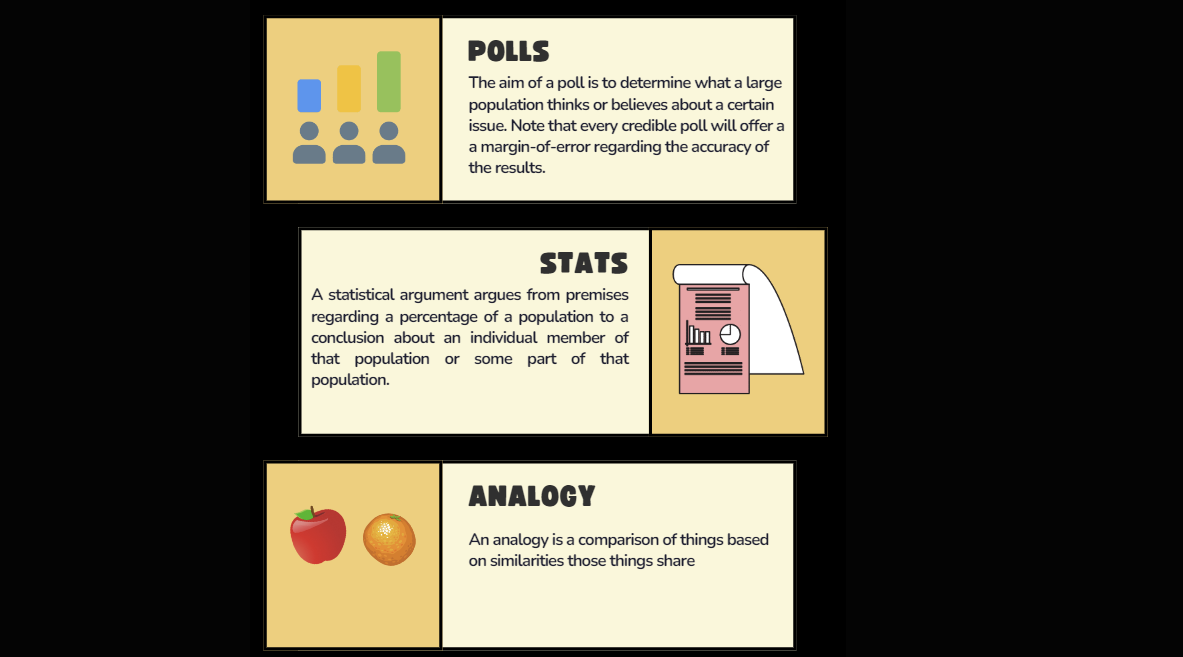
Induction, just like deduction, does have some frequently encountered argument patterns. Here are five that will prove useful:
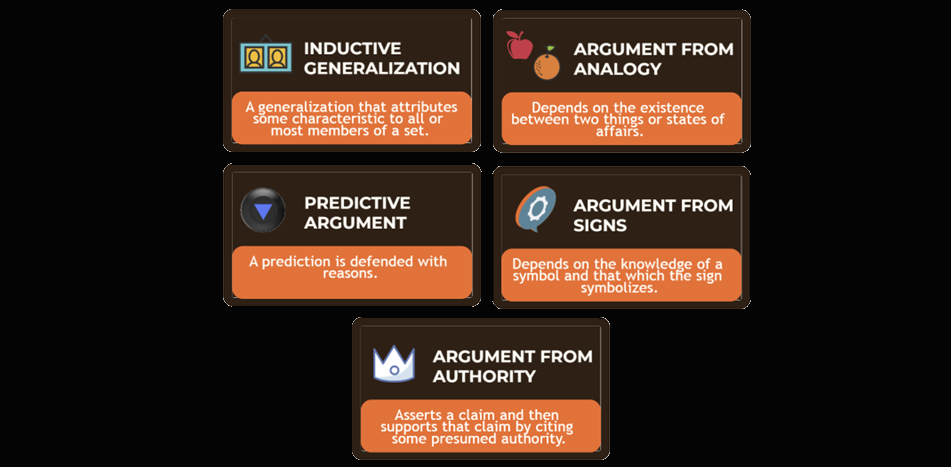
Evaluating Arguments
Regardless of the type of argument, whether deductive or inductive, the evaluation of any argument involves answering two distinct questions: 1. Do the premises support the conclusion? 2. Are all the premises true? The answer to the first question is the more important one, because if the premises fail to support the conclusion (that is, if the reasoning is bad), the argument is worthless.
Given the inherent differences between and among deduction and induction, the evaluation differs as well. In deduction, we assess validity. In induction, we assess cogency. Let's take a look at each...
That's a Valid Point
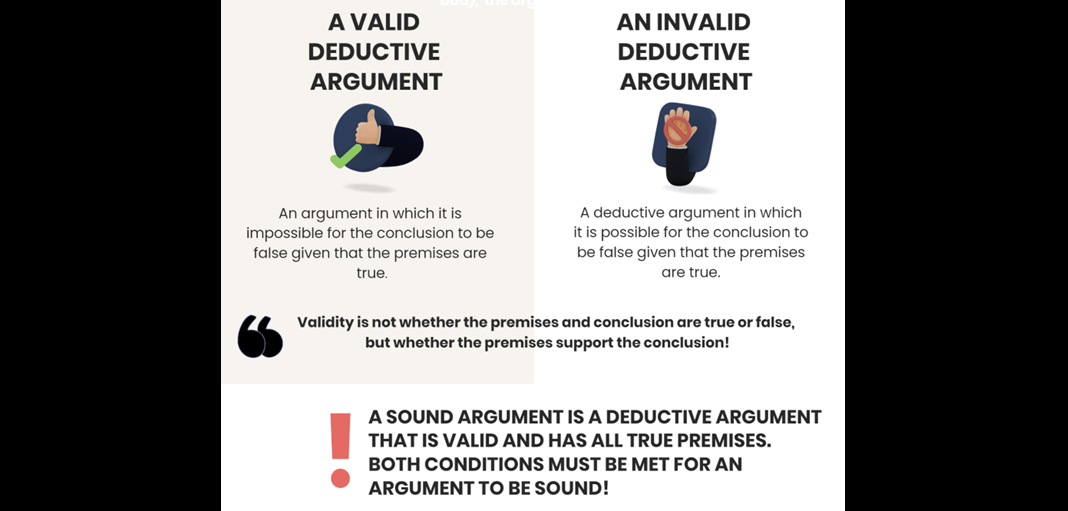
Valid Examples
Validity can be a slippery concept. It is not so much a matter of obviously true premises supporting an irrefutable conclusion.
If you grant that the premises are the case, and, the conclusion follows, the argument is considered valid. I could use a modus ponens "blueprint" and argue:
if the moon is round then is it made of cheese. The moon is round. Therefore the moon is made of cheese. Believe it or not, the argument is valid. If you were to grant the roundness somehow determines the material out of which the moon is made (a long shot)
then it would follow that the moon's roundness informs us of its cheeziness!. Here are some other helpful examples: 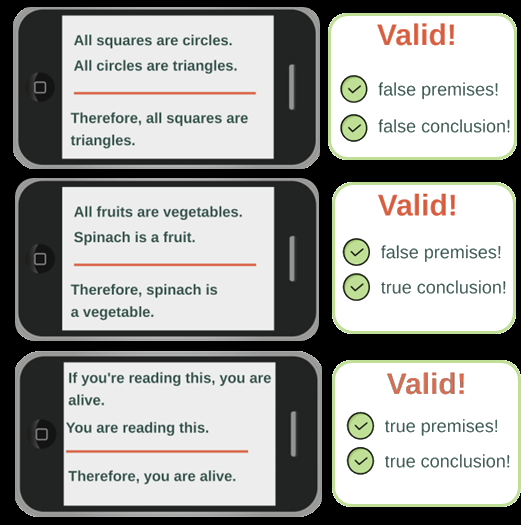
What is commonly called validity outside of critical thinking and logic classes is actually more aptly referred to as soundness. When a deductive argument is sound, the premises are true and the conclusion necessarily follows from the premises. If we return briefly to our moon argument, we can now differentiate between the validity of the argument and the argument's lack of soundness. In many cases, assessing beyond validity is required to assess an argument fully.
That a Cogent Point!
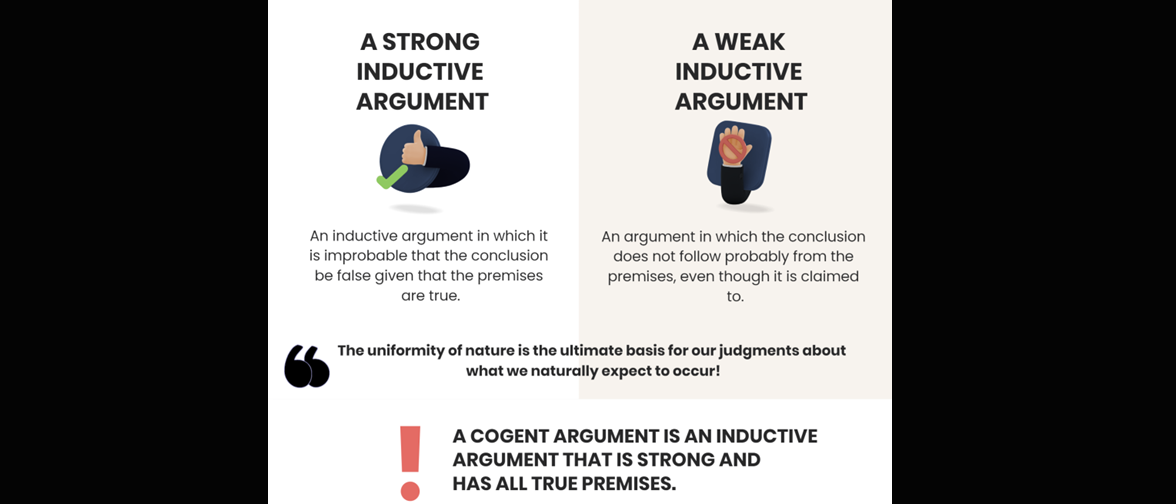
Remember that inductive arguments are assessed in terms of probablity. Instead of validity and soundness, induction weighs the strength of the inference present within the argument. The stronger the inference, the higher the probability that the argument works. In scientific terms, we might state that the stronger the inductive argument, the more probable the hypothesis is that is serving as the base of the argument or position. In statistical terms, we might refer to confidence intervals and use strength to our ability to stand behind that which is being forwarded for consideration.
The "gold standard" critical thinkers seek when constructing or assessing inductive arguments is cogency. Much like soundness within deductive arguments, cogency requires the premises to be true. But in addition to the truth of the premises, the strength or pull of the inference being made is highly probable.
Congratulations!
You have reached the end of Module 2. Please return to our course, and complete the short quiz on argument types.
